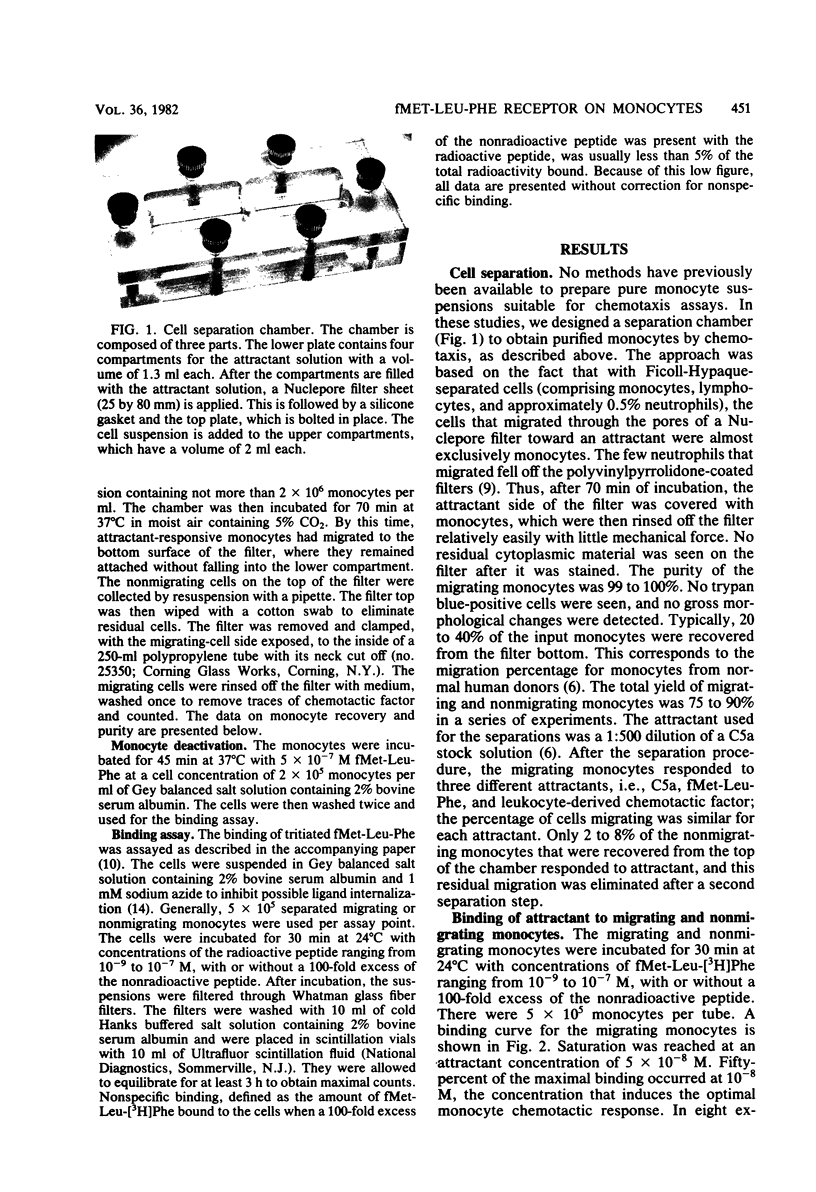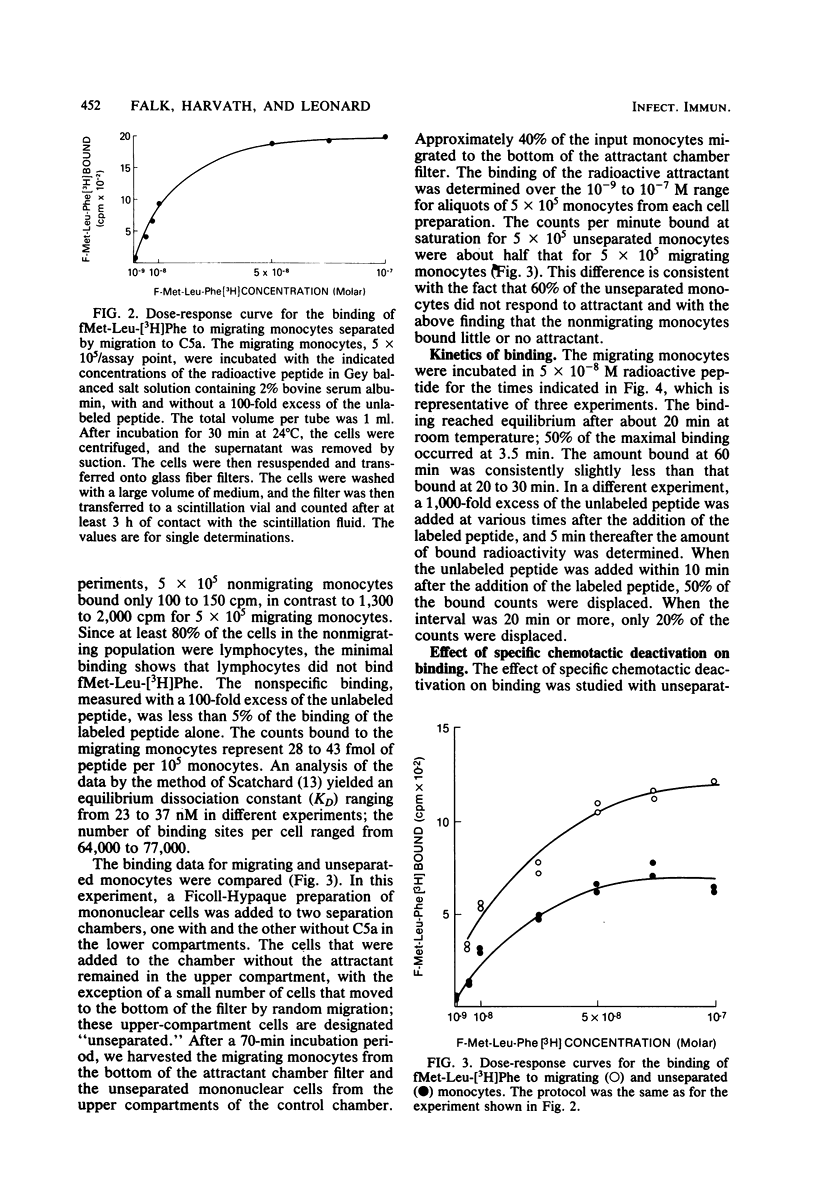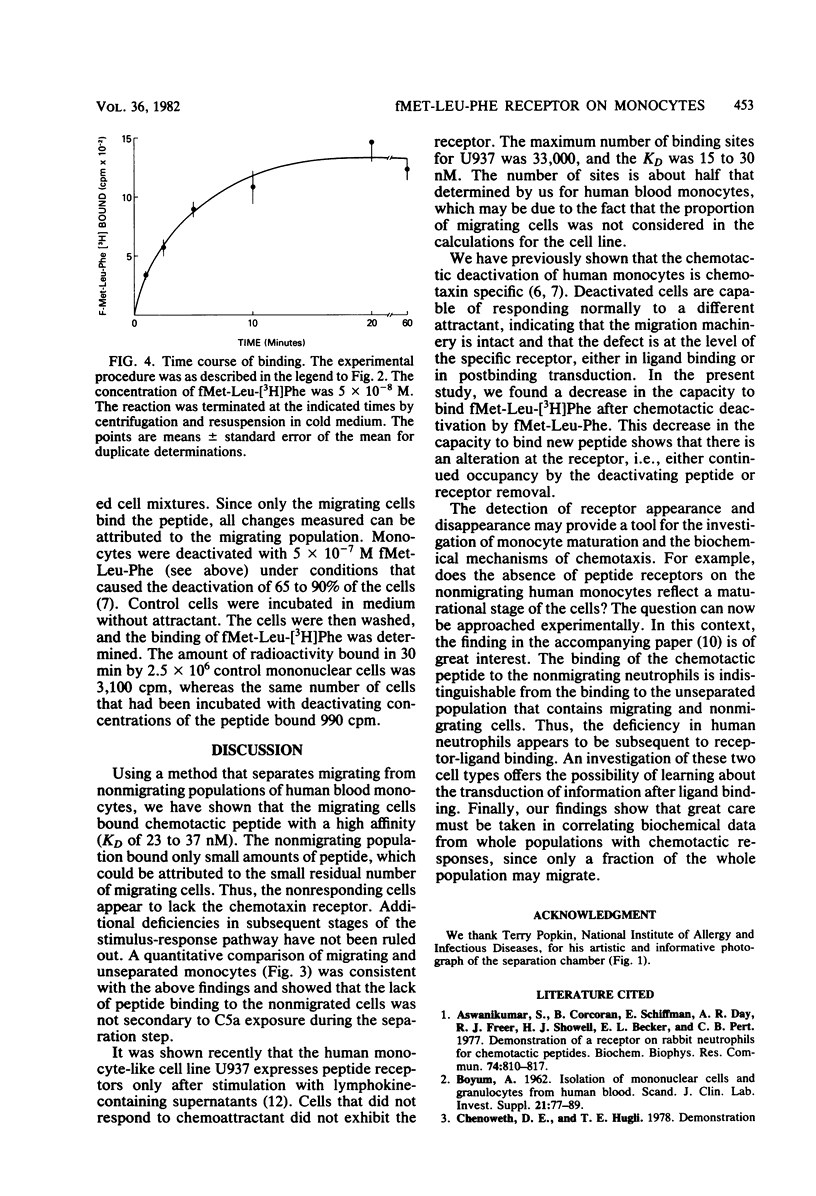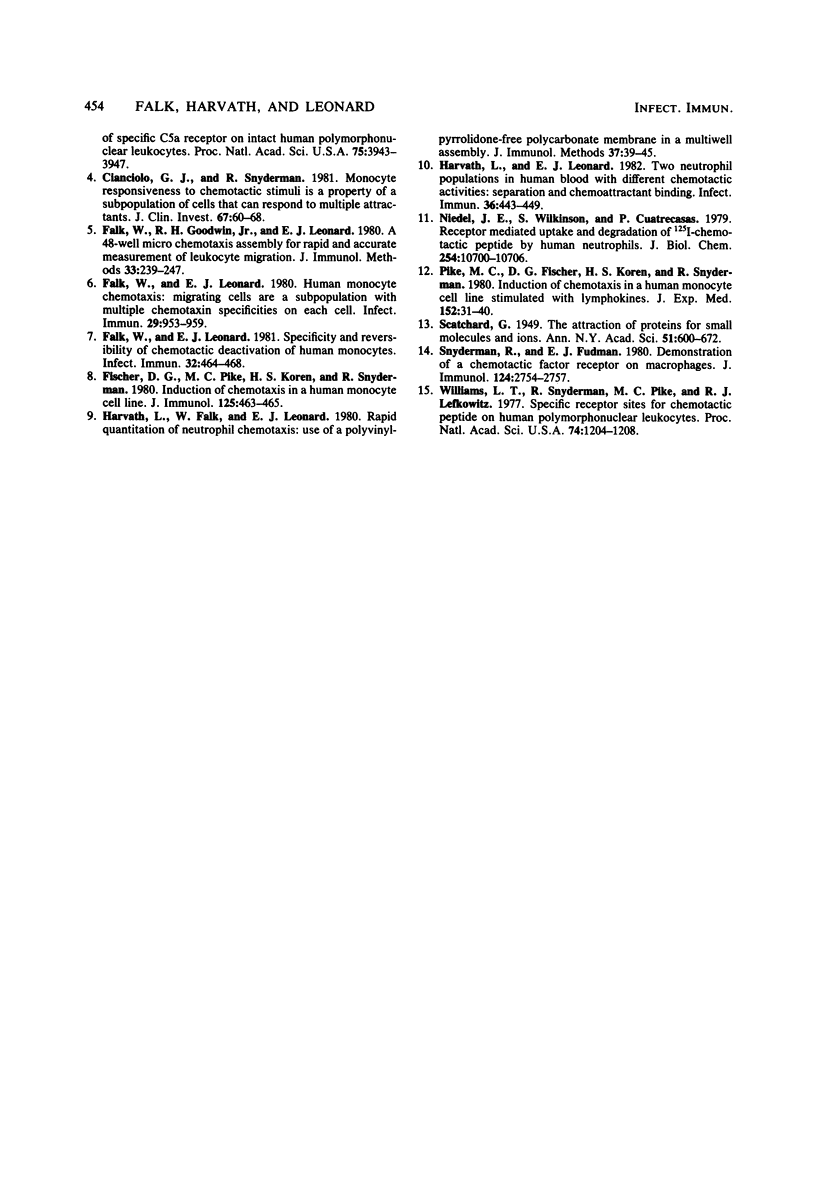Abstract
Human peripheral blood monocytes comprise a subpopulation of 20 to 40% that is capable of responding to chemoattractants and a remaining subpopulation that cannot respond. We were able to obtain 99%-pure attractant-responsive monocytes by using a newly constructed separation chamber. The binding of the radioactive chemotactic peptide N-formylmethionyl-leucyl-[3H]phenylalanine to migrating and nonmigrating populations was then studied. The binding was saturable at room temperature in the presence of azide. Saturation occurred at 5 x 10(-8) M, and 50% of the maximal binding was obtained at 10(-8) M, the concentration that induced optimal chemotaxis. The nonmigrating monocytes did not bind the peptide under the same conditions, which shows that at least one reason for a nonresponsiveness to chemotaxin is apparently a lack of receptors. By Scatchard analysis we calculated an equilibrium dissociation constant ranging from 23 to 37 nM; the number of binding sites per cell ranged from 64,000 to 77,000. The binding was very rapid. Fifty percent of the optimal binding occurred at 3.5 min, and equilibrium was reached after 20 to 30 min. Chemotactic deactivation of the monocytes reduced the number of available binding sites by 60%.
Full text
PDF




Images in this article
Selected References
These references are in PubMed. This may not be the complete list of references from this article.
- Aswanikumar S., Corcoran B., Schiffmann E., Day A. R., Freer R. J., Showell H. J., Becker E. L. Demonstration of a receptor on rabbit neutrophils for chemotactic peptides. Biochem Biophys Res Commun. 1977 Jan 24;74(2):810–817. doi: 10.1016/0006-291x(77)90375-8. [DOI] [PubMed] [Google Scholar]
- Cianciolo G. J., Snyderman R. Monocyte responsiveness to chemotactic stimuli is a property of a subpopulation of cells that can respond to multiple chemoattractants. J Clin Invest. 1981 Jan;67(1):60–68. doi: 10.1172/JCI110033. [DOI] [PMC free article] [PubMed] [Google Scholar]
- Falk W., Goodwin R. H., Jr, Leonard E. J. A 48-well micro chemotaxis assembly for rapid and accurate measurement of leukocyte migration. J Immunol Methods. 1980;33(3):239–247. doi: 10.1016/0022-1759(80)90211-2. [DOI] [PubMed] [Google Scholar]
- Falk W., Leonard E. J. Human monocyte chemotaxis: migrating cells are a subpopulation with multiple chemotaxin specificities on each cell. Infect Immun. 1980 Sep;29(3):953–959. doi: 10.1128/iai.29.3.953-959.1980. [DOI] [PMC free article] [PubMed] [Google Scholar]
- Falk W., Leonard E. J. Specificity and reversibility of chemotactic deactivation of human monocytes. Infect Immun. 1981 May;32(2):464–468. doi: 10.1128/iai.32.2.464-468.1981. [DOI] [PMC free article] [PubMed] [Google Scholar]
- Fischer D. G., Pike M. C., Koren H. S., Snyderman R. Chemotactically responsive and nonresposive forms of a continuous human monocyte cell line. J Immunol. 1980 Jul;125(1):463–465. [PubMed] [Google Scholar]
- Harvath L., Falk W., Leonard E. J. Rapid quantitation of neutrophil chemotaxis: use of a polyvinylpyrrolidone-free polycarbonate membrane in a multiwell assembly. J Immunol Methods. 1980;37(1):39–45. doi: 10.1016/0022-1759(80)90179-9. [DOI] [PubMed] [Google Scholar]
- Harvath L., Leonard E. J. Two neutrophil populations in human blood with different chemotactic activities: separation and chemoattractant binding. Infect Immun. 1982 May;36(2):443–449. doi: 10.1128/iai.36.2.443-449.1982. [DOI] [PMC free article] [PubMed] [Google Scholar]
- Niedel J., Wilkinson S., Cuatrecasas P. Receptor-mediated uptake and degradation of 125I-chemotactic peptide by human neutrophils. J Biol Chem. 1979 Nov 10;254(21):10700–10706. [PubMed] [Google Scholar]
- Pike M. C., Fischer D. G., Koren H. S., Snyderman R. Development of specific receptors for N-formylated chemotactic peptides in a human monocyte cell line stimulated with lymphokines. J Exp Med. 1980 Jul 1;152(1):31–40. doi: 10.1084/jem.152.1.31. [DOI] [PMC free article] [PubMed] [Google Scholar]
- Snyderman R., Fudman E. J. Demonstration of a chemotactic factor receptor on macrophages. J Immunol. 1980 Jun;124(6):2754–2757. [PubMed] [Google Scholar]
- Williams L. T., Snyderman R., Pike M. C., Lefkowitz R. J. Specific receptor sites for chemotactic peptides on human polymorphonuclear leukocytes. Proc Natl Acad Sci U S A. 1977 Mar;74(3):1204–1208. doi: 10.1073/pnas.74.3.1204. [DOI] [PMC free article] [PubMed] [Google Scholar]



